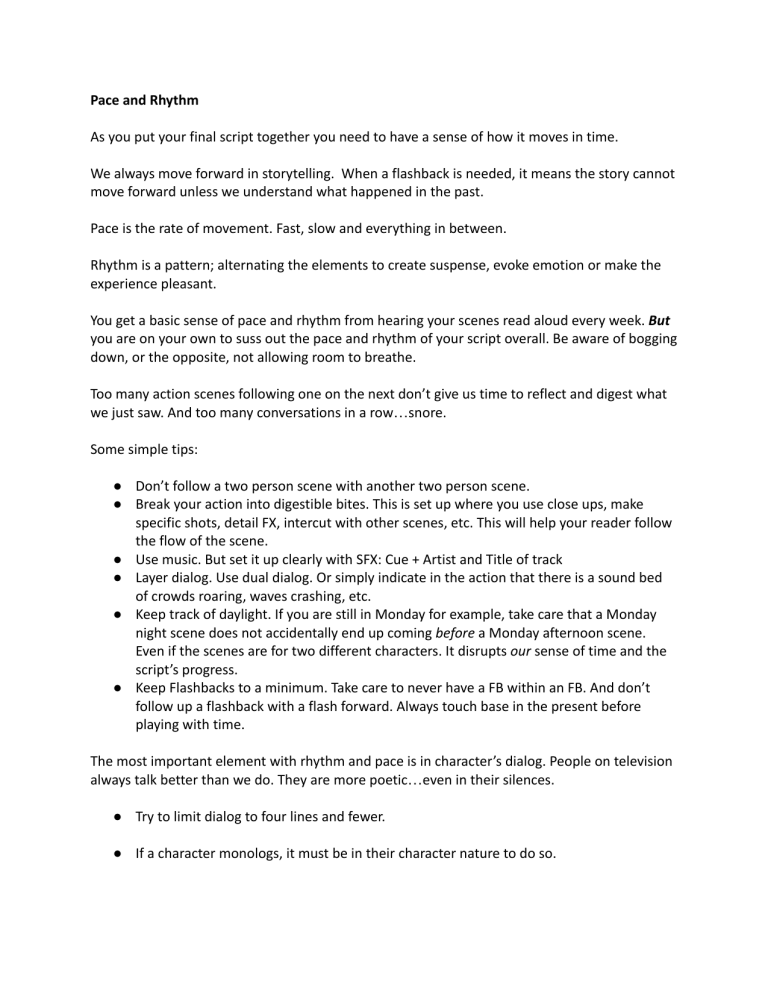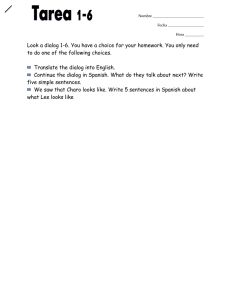
Pace and Rhythm As you put your final script together you need to have a sense of how it moves in time. We always move forward in storytelling. When a flashback is needed, it means the story cannot move forward unless we understand what happened in the past. Pace is the rate of movement. Fast, slow and everything in between. Rhythm is a pattern; alternating the elements to create suspense, evoke emotion or make the experience pleasant. You get a basic sense of pace and rhythm from hearing your scenes read aloud every week. But you are on your own to suss out the pace and rhythm of your script overall. Be aware of bogging down, or the opposite, not allowing room to breathe. Too many action scenes following one on the next don’t give us time to reflect and digest what we just saw. And too many conversations in a row…snore. Some simple tips: ● Don’t follow a two person scene with another two person scene. ● Break your action into digestible bites. This is set up where you use close ups, make specific shots, detail FX, intercut with other scenes, etc. This will help your reader follow the flow of the scene. ● Use music. But set it up clearly with SFX: Cue + Artist and Title of track ● Layer dialog. Use dual dialog. Or simply indicate in the action that there is a sound bed of crowds roaring, waves crashing, etc. ● Keep track of daylight. If you are still in Monday for example, take care that a Monday night scene does not accidentally end up coming before a Monday afternoon scene. Even if the scenes are for two different characters. It disrupts our sense of time and the script’s progress. ● Keep Flashbacks to a minimum. Take care to never have a FB within an FB. And don’t follow up a flashback with a flash forward. Always touch base in the present before playing with time. The most important element with rhythm and pace is in character’s dialog. People on television always talk better than we do. They are more poetic…even in their silences. ● Try to limit dialog to four lines and fewer. ● If a character monologs, it must be in their character nature to do so. ● If a character delivers a monolog, let us see what action is going on under it. Make some of that monolog a voice over. ● Choose evocative words. Active verbs and unusual language when appropriate. By appropriate I mean, for example, tech talk, street talk, teen slang, cop talk…those modes are always fun and if we do not get the precise meaning because they not are in the general lexicon, we will absorb the meaning from context. ● It sometimes helps to enliven dialog to sing it out loud to yourself. It’s silly but it will give you ideas for snappier dialog.



